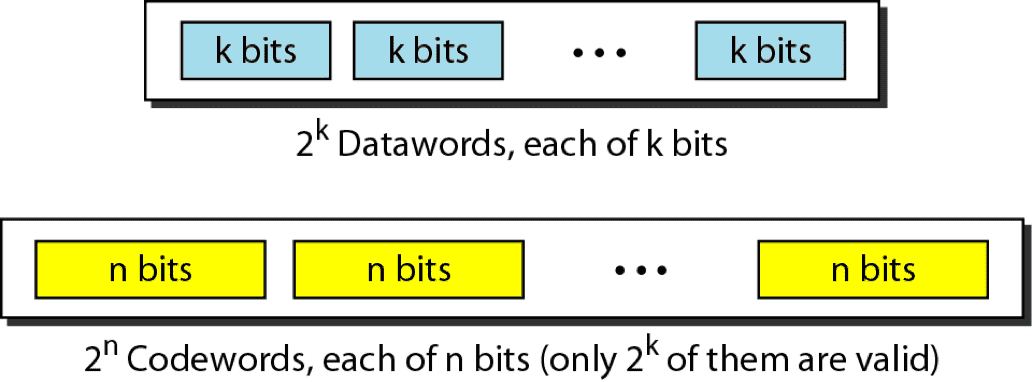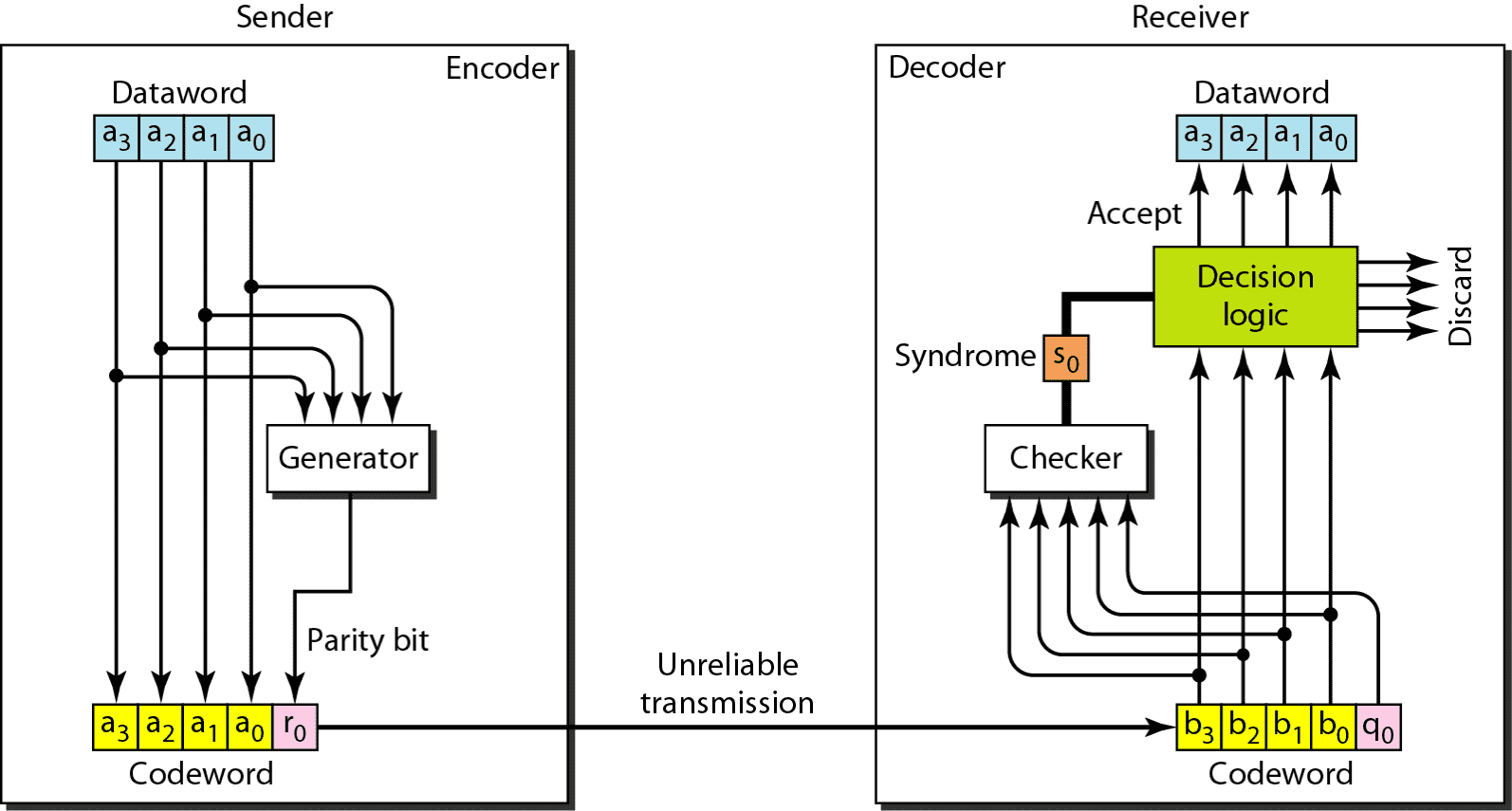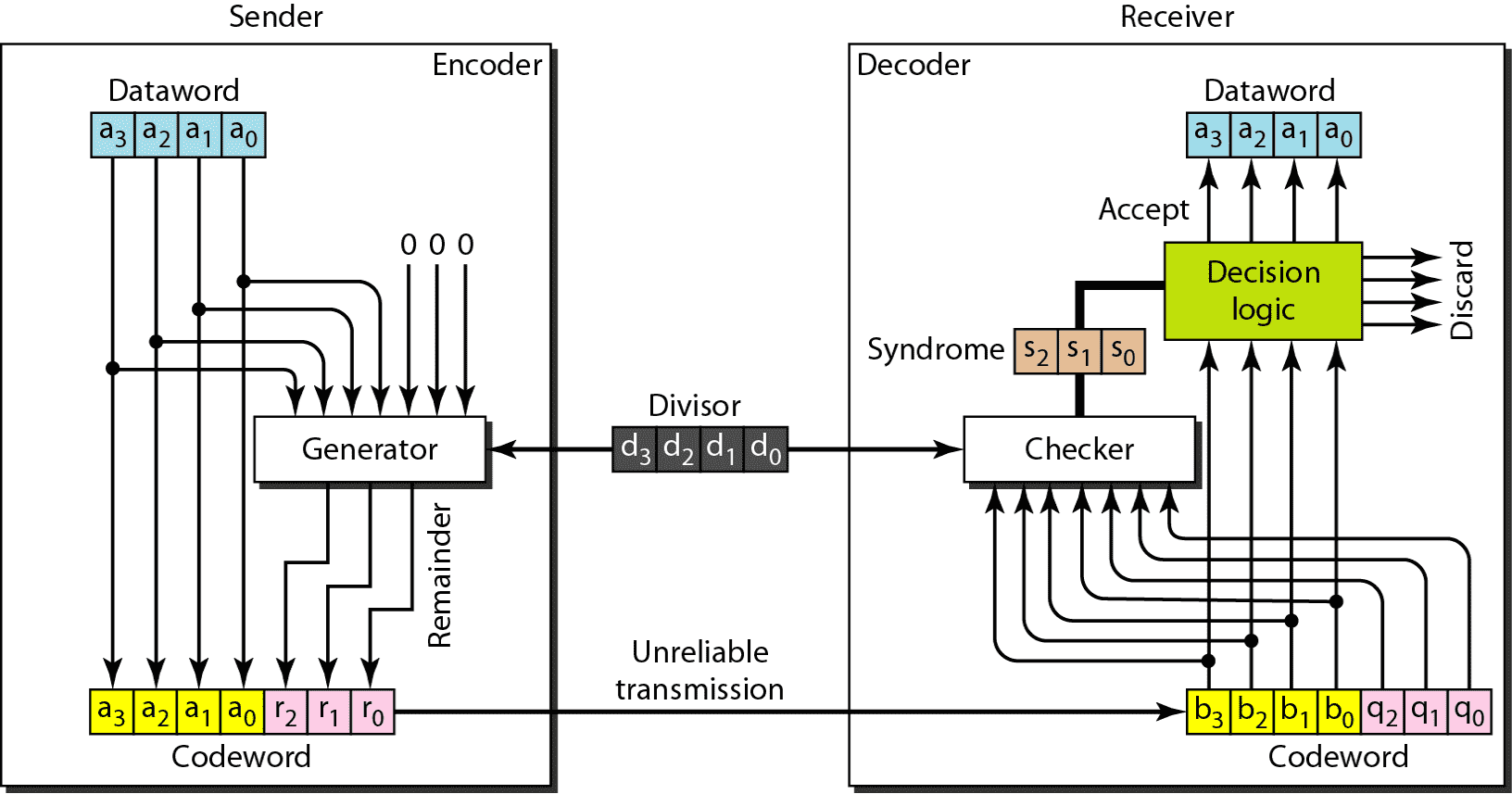04 Data Link Layer
It is a combination of hardware, software, and firmware (software for hardware)
It is implemented in NIC and attaches into host’s system buses
Sublayers¶
The data link may be further divided into sublayers, which is explained in detail in Ethernet
Flow Control¶
Handles mismatch b/w sender’s and receiver’s speed
| Control Method | Type | Meaning |
|---|---|---|
| Feedback-Based (More common) | Explicit | Permission required from receiver |
| Rate-Based | Implicit | Limit sending rate |
Error Types¶
| Type | No of Bits | Consecutive Bits? |
|---|---|---|
| Single-Bit | 1 | |
| Multiple-Bit | >1 | ❌ |
| Burst | >1 | ✅ |
Error Control¶
| Error detection codes | Detect error |
| Error/Forward correction codes (FEC) | Detect & correct error Use in wireless networks |
| Retransmission/ Automatic Repeat Request (ARQ) | Used along with error detection/correction Block of data with error discarded Transmitter retransmits that block of data |
Redundancy¶
Redundant bits added to data to detect & correct errors
flowchart LR
subgraph s[Sender's Encoder]
m1[Message] -->
Generator -->
a[Message &<br/>Redundancy]
end
subgraph r[Receiver's Decoder]
d[Received<br/>Data] -->
c[Checker] -->
|Accept| m2[Message]
end
a -->
|Unreliable<br/>Transmission| d
c --> |Discard| LostCoding¶
Process of adding redundancy for error detection/correction
Error-detecting code can detect only types of errors for which it is designed; other types of errors may remain undetected. There is no way to detect every possible error
| Code | Steps | Redundant bits | Total bits \(n\) | Memoryless? |
|---|---|---|---|---|
| Block | Divide data into set of \(k\)-bit blocks (called datawords) Extra info attached to each block Combined blocks called codewords | \(r\) | \(k+r\) | ✅ |
| Convolutional | Treats data a series of bits Computes code over continuous series | ❌ (Code depends on current & previous i/p) |

flowchart TB
d1["Dataword<br/>a3 a2 a1 a0<br/><br/>(k bits)"] -->
c1 & g["Generator<br/>(r bits)"]
g -->
c1["Codeword<br/>a3 a2 a1 a0 <span style='color:red'>p0</span><br/><br/>(n bits)"]Code Rate¶
\[ = \frac{k}{n} \]
| Code Rate | \(\implies\) | Error Correcting Capability | Bandwidth Efficiency |
|---|---|---|---|
| \(\uparrow\) | \(\downarrow\) | \(\uparrow\) | |
| \(\downarrow\) | \(\uparrow\) | \(\downarrow\) |
Error Detection Methods¶
If syndrome = 0 at the receiver, there is no error
| Simple parity check | Horizontal & Vertical Parity check | CRC (Cyclic Redundancy Check) | Checksum | |
|---|---|---|---|---|
| Use an odd/even parity bit | Use parity bit vertically and horizontally | Add \(r\) zeros to right of dividend, where \(r=\)no of redundant bits = length of divisor - 1 Long division using XOR | (used in network layer) Find sum of digits If overflow, perform padding Take 1s complement | |
| Errors detectable | \(\{1, 3, \dots, 2n+1 \}\) (odd no of errors) | \(\{1, 2, 3, 5, 6, 7, \dots \} \implies R - \{4n\}\) | All | All |
| Can correct error? | ❌ (error can be in any position including parity bit itself) | |||
 |  |  |
Simple Parity¶
| Parity | Parity bit = 0 means dataword has |
|---|---|
| Odd | Odd number of ones |
| Even | Even number of ones |
Mac Layer Throughput¶
Number of bits sent by MAC (Data Link) layer in given period of time
\[ \begin{aligned} \text{Throughput} = \frac{\text{Payload}}{\text{Total Time}} \end{aligned} \]
Control Frame¶
Frames that only contain headers/trailers, and no payload